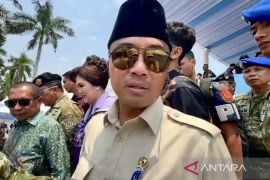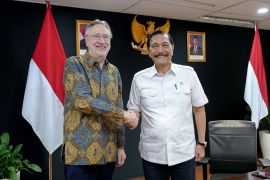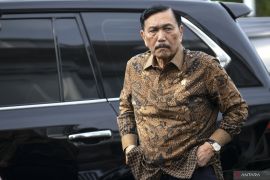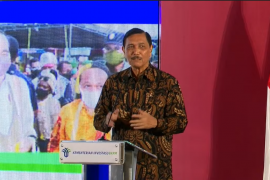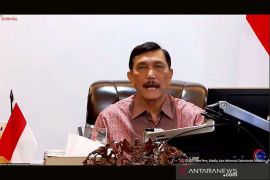Indonesia’s manufacturing PMI, which broke the record in October 2021, was one of the best among ASEAN countries.Jakarta (ANTARA) - Coordinating Maritime and Investment Minister Luhut Binsar Pandjaitan furnished detailed information on some of the economic recovery achievements viewed as the government's success in handling COVID-19 cases.
The achievements are recorded in the manufacturing activities as reflected in the purchasing managers index (PMI) of the downstream industry in the mineral and coal sector, Pandjaitan noted during a public lecture for the students of Army Staff and Commander (Seskoad) in Bandung, West Java, on Thursday.
“Indonesia’s manufacturing PMI, which broke the record in October 2021, was one of the best among ASEAN countries,” the minister remarked in a press statement issued here on Friday.
The Indonesian manufacturing PMI in March and April 2020 significantly slid to 27.5.
Meanwhile, the index slightly dropped during the enforcement of public activity restrictions (PPKM) at the start of July 2021 though thereafter directly surging to 57.2 in October 2021.
Apart from the manufacturing PMI, Bank Indonesia’s consumer confidence index that fell to the pessimistic level due to PPKM had risen to the optimistic level within only three months.
Currently, the consumer confidence index in October 2021 had increased to 113.4, with the optimistic value scale over 100 or the highest level during the pandemic.
Indonesia will face bigger economic challenges post-pandemic, thereby necessitating an economic growth of six percent in a bid to realize its vision to become a high-income nation before 2045, the minister expounded.
To meet this target, Indonesia can no longer rely on the past economic models that depended on commodity exports, he noted.
Related news: G20 Presidency opportunity to lead global economic recovery: Minister
Hence, Indonesia should transform into an industrial country by downstreaming of the natural resources, according to Pandjaitan.
Indonesia has abundant natural resource reserves to meet the needs of clean energy, such as nickel, bauxite, coal, and tin, whose demand is projected to rise following several countries committed to tackling climate change, he emphasized.
Through nickel downstreaming, Indonesia has become a part of the global battery supply chain in pursuit of realizing the emission reduction vision by 2030 through electric vehicle (EV) utilization, he pointed out.
“Natural resource downstreaming can help slash Indonesia’s current account deficit,” he stated.
With the downstreaming of natural resources, the exports of iron and steel surged to over US$16 billion during the January-October 2021 period, from US$1.1 billion by 2024.
“If the export continues to grow like today, the total exports of iron and steel by the end of 2021 can touch US$20 billion,” he noted.
Furthermore, economic growth can be much higher in the regions where natural resource downstreaming activities are being conducted, according to Pandjaitan.
During the third quarter of 2021, economic growth in Central Sulawesi and North Maluku climbed by 10.2 percent and 10.4 percent respectively, or much higher than 3.5 percent of the national economic growth.
Related news: Indonesia to push for sustainable recovery during G20 Presidency
Translator: Ade Irma, Juwita Trisna
Editor: Rahmad Nasution
Copyright © ANTARA 2021

